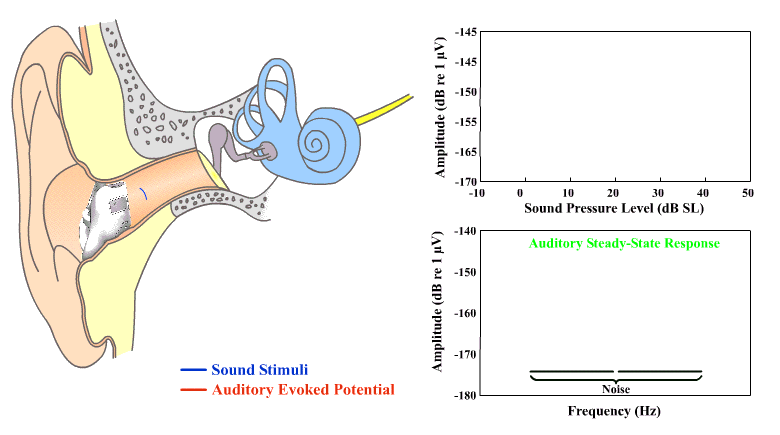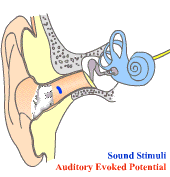
Integration of auditory evoked potential techniques in hearing aids potentially enable assessment of the users hearing on a regular basis. Hearing threshold levels can be estimated in the clinic using the objective EEG-based technique of auditory steady state response (ASSR). However, conventional EEG is impractical out of the clinic since it is rather obtrusive with electrodes across the head, and requires assistance of trained personnel. Ear-EEG, where the EEG electrodes are embedded in a hearing aid-like earpiece, potentially provides an unobtrusive way of measuring EEG suitable for monitoring of audiometric thresholds over time in everyday life.
The objective of the current study was to evaluate the feasibility of ear-EEG in audiometric characterization of auditory sensitivity thresholds of normal hearing subjects. To do so, an ear-EEG setup was used to estimate ASSR hearing thresholds to CE-Chirp stimuli (with center frequencies 0.5, 1, 2 and 4 kHz) from 4 different electrode configurations including a conventional scalp configuration, an ear electrode with scalp reference, ear electrode with a reference electrode in the opposite ear and ear electrode with reference electrode in the same ear. To evaluate the ear-EEG setup, ASSR thresholds estimated using ear-EEG were compared to ASSR thresholds estimated using standardized audiological equipment. It was demonstrated that hearing threshold levels can be estimated from ear-EEG recordings made from electrodes placed in one ear. Thresholds determined from in-ear referenced ear-EEG were on average 15.0 ± 3.4, 9.1 ± 4.4, 12.5 ± 3.7, and 12.1 ± 2.6 dB above scalp EEG thresholds for 0.5, 1, 2 and 4 kHz, respectively.
Further research may be found at: eng.au.dk/en/research/laboratory-facilities/neuro-technology-laboratory/

